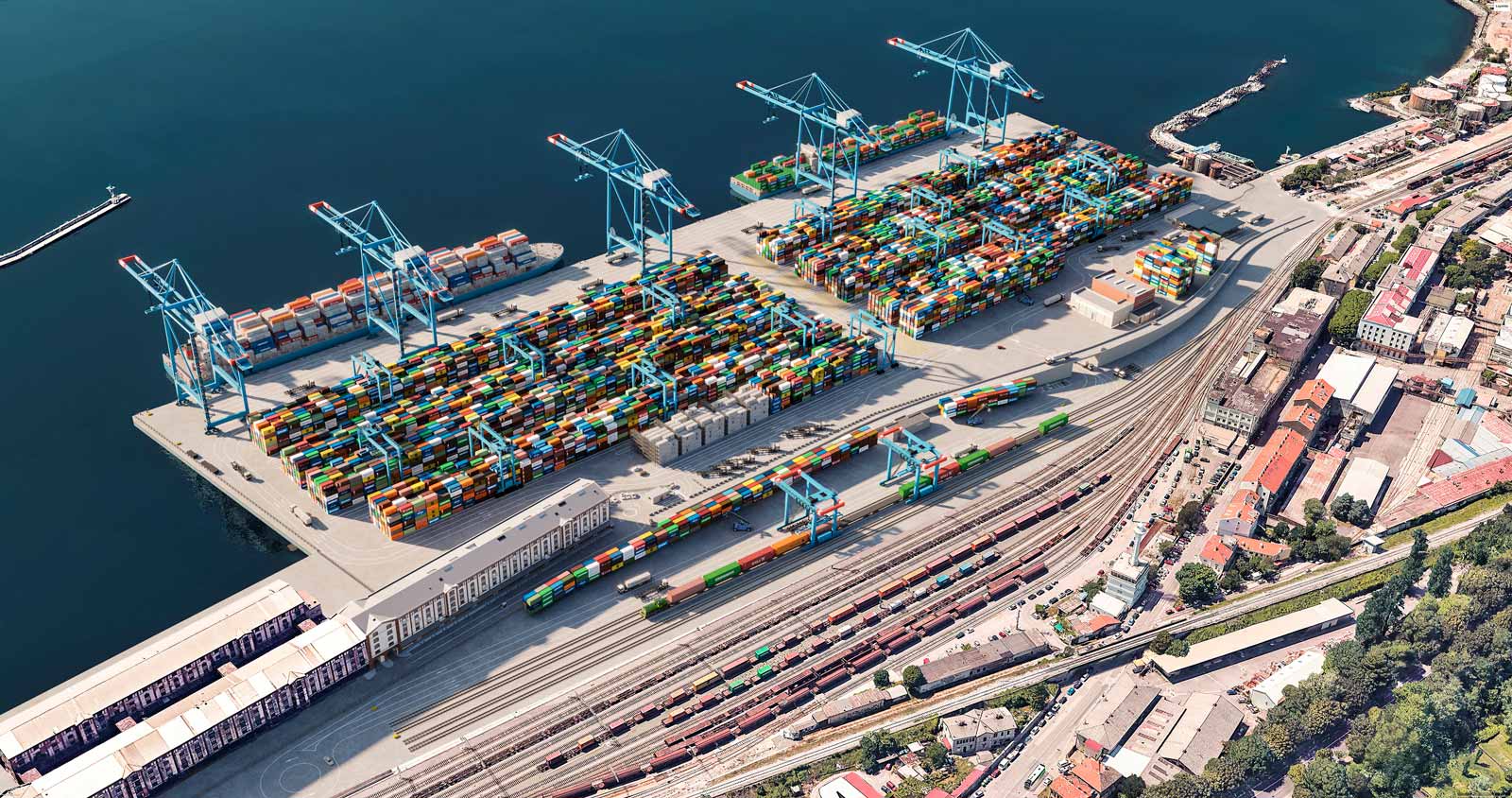
03/04/24
Major electrification investment for new Croatian terminal
- Electrification of container handling equipment is key for APM Terminals to achieve its ambition of Net-Zero in 2040
- Rijeka Gateway, a joint venture (JV) between APM Terminals and ENNA Logic, will set a milestone with more than 60 pieces of electric container handling equipment - including ship-to-shore (STS) cranes, rubber-tyred gantry cranes and vehicles
- The first pieces of equipment will arrive in July 2024 – with operations starting in 2025 with an annual capacity of 650,000 TEU, once the construction is complete (1,055,000 TEU is planned for phases 1+2)
When the Rijeka Gateway is fully operational in 2025, it will set a huge milestone for APM Terminals’ efforts to electrify its container handling fleet. To meet the needs at Rijeka Gateway, APM Terminals and ENNA Logic have invested in more than 60 pieces of electric container handling equipment, meaning that all major container handling will be carried out by electric-powered assets, when operations start.
The first batch of new terminal equipment will arrive this July, coordinated with employee training in best practice implementation.
“At APM Terminals, we have an ambitious goal of reaching Net-Zero by 2040. To reach this goal and decarbonise our operations, we need to reduce energy usage, replace fossil-fuel driven equipment with battery-electric and decarbonise our grid using renewable energy. Therefore, the investment in Rijeka Gateway is a major step in the right direction, which further builds upon the pilots that we are already running in various locations around the world,” says Sahar Rashidbeigi, Head of Decarbonisation in APM Terminals.
100-million-euro investment
In total, investments of about 100 million euros will be made in equipment for the new terminal, which celebrated its groundbreaking ceremony in September 2023.
The full fleet of electrified equipment will comprise four STS cranes, 15 rubber-tyred gantry cranes, two rail-mounted gantry cranes, 28 electric terminal tractors and 14 electric vehicles.
“I am proud that – with 95% of our equipment value being invested in electric assets – Rijeka Gateway will be an almost fully decarbonised container terminal. We are contributing to the creation of a better world for all. We are lifting standards of responsibility, not only for Rijeka, but the whole of Croatia,’’ said Koen Benders, Project Director Rijeka Gateway.
Electrification is key
At COP28, APM Terminals and DP World launched an industry alliance (ZEPA) to accelerate container-terminal decarbonisation. Research done in an industry white paper prior to the launch shows that battery-electric container handling equipment can become accessible, affordable, and attractive within 2-8 years, if all stakeholders are onboard.
“For me, the white paper and formation of the alliance was quite a breakthrough in our efforts to accelerate the process. We launched ZEPA to encourage the scaling up of production capacity, bring down the cost of batteries and charging solutions, and create better implementation conditions for zero-emission fleets. Our experience and feedback since the launch shows us that the industry wants to engage to solve the challenge,” says Sahar Rashidbeigi.
Currently, APM Terminals is rolling out pilots in Aqaba, Jordan; Pier 400 and Mobile, USA; Barcelona, Spain; and SCCT, Egypt to explore possibilities and new solutions for electrification.
For more information about the Rijeka Gateway, visit Rijeka Gateway - APM Terminals.
More information on APM Terminals’ decarbonisation efforts and the ZEPA Alliance to accelerate roll-out of battery-electric container handling equipment can also be found here.